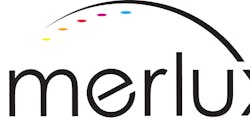Japan has been the world leader in inorganic LED technology since the breakthrough in fabrication processes in 1989 and in recent years its national "Light for the 21st Century" programme has driven developments in areas vital to mass-market, high-volume lighting solutions. By visiting the research institutes, manufacturers and innovative spin-outs at the heart of these developments, information gathered on the recent DTI mission to Japan will enable UK companies to appreciate state-of-the-art LED technology and its diverse applications.
It will also, says Geoff Archenhold, then Director of the Photonics Cluster (UK), which co-ordinated the mission, "provide key UK Government departments with an understanding of how to promote LED technology that can save up to 80 percent in energy costs while providing an environmentally friendly solution to lighting."
Findings from the DTI missions to Japan and the USA will be disseminated at an event in Birmingham on May 18 (see Seminar presents LED observations in Japan and USA).
Coordination in Japan
Japan’s co-ordinated approach has resulted in crucial advances in chip and wafer packaging, thermal management and mass manufacturing, and also in the efficiency and consistency of white LED light. The arrival of high-quality white LED light marks a critical moment, enabling the technology to match the performance of conventional general lighting.
Mission team member Professor Wang Wang of the Department of Physics at Bath University says the quality of its chips is enabling Japan to "move on from using LEDs for applications such as mobile phone backlighting into new areas that combine with existing infrastructure, such as transport, healthcare and amenity lighting."
It is in these sectors that really exciting things are now happening. But they are only possible, says Archenhold, "because Japanese Government departments are working together on themed projects to promote and stimulate the use of LED lighting." For things to start happening here, a similar vision is required.
In the meantime, the mission team agrees that UK companies should continue to play to their strengths, adopting advanced LED technologies from overseas and building them into their own systems.
Partnerships with Japanese organisations are going to be particularly valuable, says DTI International Technology Promoter Phillip White. "To ensure their products are competitive, UK companies need to use the most efficient LEDs available now and in the future, therefore they need to be talking with Japanese LED suppliers about their technology development plans," he added.
Travelling light: LEDs for transport
• Traditional filament lamps in traffic lights are being replaced by LED variants in a nationwide programme part-funded by the Japanese Ministry of Economy, Trade and Industry (METI).
• Variable message displays enabled by LED lighting and integrated into traffic management systems are used extensively at major junctions and city boundaries. Linked to road sensors, these signs display text, maps and images to alert drivers to issues such as onward congestion and available parking.
• Variable-coloured traffic signals have been developed in which coloured LED lighting set behind transparent casing is adjusted to account for external light and conditions to maximise visibility and presence for road users.
"At Koito Industries we saw a three-aspect LED road traffic signal produced on a flexible board which has a separate self-contained power supply and battery pack and can be rolled up and set up wherever needed to warn of an emergency," said David Rudge, Technical Authority, Westinghouse Rail Systems.
Healthcare highlights: LEDs in medicine
• Japan has launched a five-year £12.5m (2,642m yen) programme sponsored by METI to develop LED medical equipment and therapeutics to capitalise on healthcare opportunities opened up by advances in white light quality. The £2.85m (602m yen) Yamaguchi-Ube Medical Innovation Centre (YuMIC) has brought together more than 20 companies and universities to develop LEDs for use in, for example, surface skin treatments, cancer cell destruction and endoscopes.
• Specialised white light sources for hospitals are being developed at YuMIC which take advantage of the way LED lighting can be directed to highlight veins or incision points and creatively controlled to change mood and encourage patients to sleep or wake.
• Nitride Semiconductors is using the ability of UV LED light to kill bacteria to develop multi-purpose lighting products for hospitals and water-sterilisation systems for third world countries.
"Miniature systems are being developed at Meijo University in which LED lights provide illumination for tiny cameras to take pictures inside the body," said Gareth Jones, Chief Technology Officer of Enfis Ltd. "In a more advanced form, these devices can make use of the fluorescence produced by LED light on certain tissues and chemicals within the body to detect cancer and of the LEDs themselves to treat cancerous regions using the same capsule – so science fiction becomes reality."
Further information
The mission seminar, LED Technology: Lessons from Japan and the USA will be held on 18 May 2006, following the EuroLEDs conference in Birmingham on 16-17 May 2006.
To book for the May 18 event please contact Louisa Quilter at [email protected] or telephone 01664 501551.
UK companies wishing to access Japanese technologies or collaborations with Japanese organisations should contact Phillip White, DTI International Technology Promoter, at [email protected] or telephone 01664 501551.




